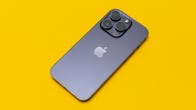Technologies
IPhone 14: Is It a Smart Decision to Upgrade Now?
It depends. This comparison guide should help you determine whether to upgrade to the iPhone 14 lineup or wait it out for a future iPhone.
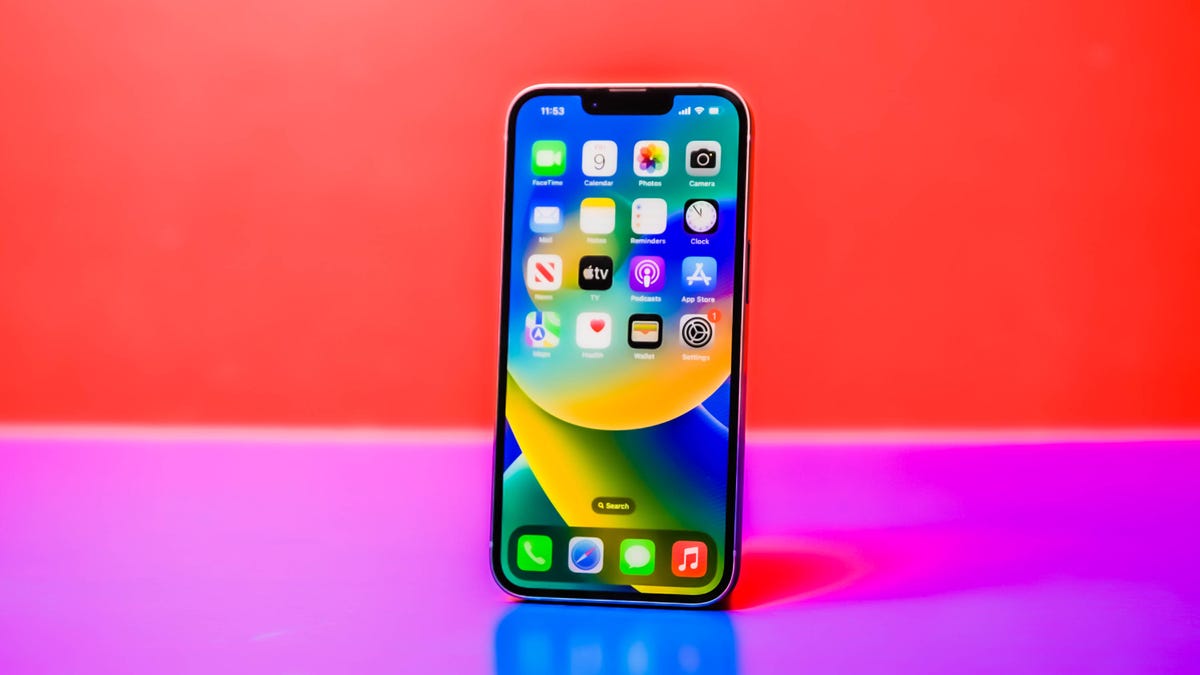
This story is part of Focal Point iPhone 2023, CNET’s collection of news, tips and advice around Apple’s most popular product.
Apple’s iPhone 14, iPhone 14 Plus and iPhone 14 Pro phones are the latest from Apple’s stable — and make for a tempting upgrade. But trading up to the hot new iPhone lineup doesn’t make sense for everyone, for a number of reasons. Above all else, the answer depends on which phone you currently own. If you have a recent model like the iPhone 13 or maybe even 12, it would be wise to wait. If your phone is older though, it’s worth figuring out what you stand to gain by jumping to a newer iPhone.
The $799 (£849, AU$1,399) iPhone 14 brings modest improvements but not game-changing ones. Those changes include nitty-gritty camera improvements, car crash detection and the support for satellite-based emergency messaging. (Hopefully, you’ll never be in a situation where you’ll need to use the latter two.) The iPhone 14 also has a new internal design, with simpler access to internal components, making it easier to repair than previous models. iFixit, a website that disassembles tech products and assesses how easy they are to fix, called it «the most repairable iPhone in years.» And if you want these features in a larger size, the iPhone 14 Plus starts at $100 more, at $899.
The iPhone 14 Pro and Pro Max’s upgrades are more dramatic, but you still don’t need to upgrade unless you can score a great trade-in deal. Apple saved its most interesting new features for the Pro lineup, including the Dynamic Island that replaces the notch, the new A16 Bionic processor and a 48-megapixel main camera sensor.
It’s important to remember that you don’t have to buy the iPhone 14 to get camera, battery and performance improvements over an earlier iPhone.
The recently discounted $699 iPhone 13 or the smaller $599 13 Mini could be a good option if you still want more storage, faster performance and an improved camera, especially if you’re coming from a phone that’s 3 years old or more. It’s also the only option if you want the smaller Mini and its 5.4-inch screen, since the iPhone 14 line eliminates that size in favor of the new $899 iPhone 14 Plus with a 6.7-inch screen.
Purchasing decisions will always vary depending on budget, how well your phone works right now and your personal needs, so there’s no simple answer that works for everyone. But here are the biggest differences between the iPhone 14 lineup and previous iPhone generations, to help you make a decision.
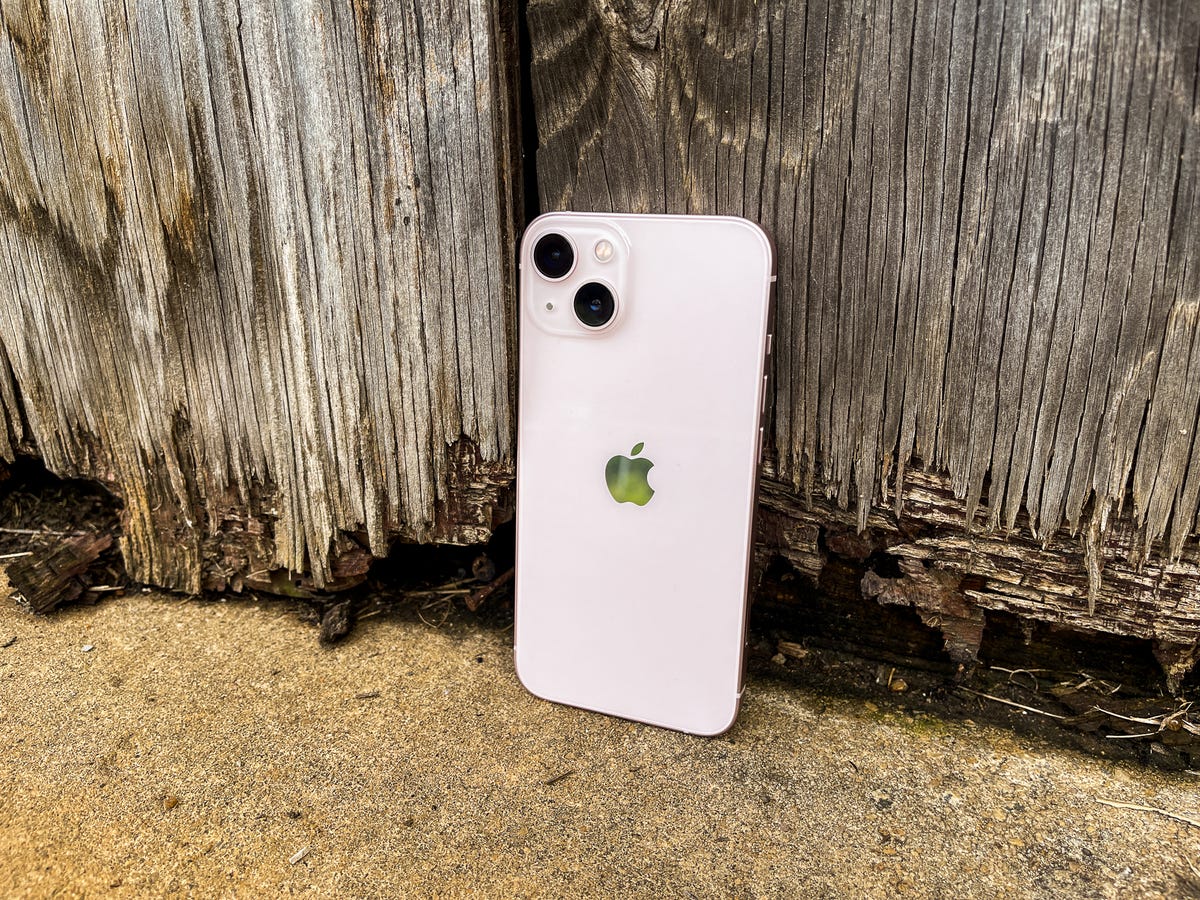

The iPhone 13.
Patrick Holland/CNETiPhone 14 vs. iPhone 13, 13 Pro, 13 Pro Max
The iPhone 14 lineup introduces new features such as car-crash detection, the removal of the physical SIM card for US phones, and enhanced cameras on the rear and front. Despite those changes, iPhone 14 isn’t different enough to justify upgrading from the iPhone 13. And even though Apple finally got rid of the infamous notch in the Pro models, the 14 and 14 Plus still have one — it’s the same smaller notch that debuted on the iPhone 13 series. In fact, the iPhone 14 represents «one of the most minimal year-over-year upgrades in Apple’s history,» according to CNET’s Patrick Holland, who reviewed Apple’s latest phones.
The iPhone 14 and iPhone 14 Plus have the A15 Bionic chip from last year’s iPhone 13 Pro and iPhone 13 Pro Max. The 14’s screen looks exactly like the one on the 13. Perhaps the most prominent change this year is the introduction of a larger version of the iPhone 14 called the iPhone 14 Plus, which has a 6.7-inch screen like the Pro Max. That means you no longer have to splurge on Apple’s most expensive iPhone if you want the largest screen possible.
Of course, the iPhone 14 is still highly rated, but we recommend saving your money and skipping the upgrade. If you’ve made up your mind to upgrade, we suggest going for an iPhone 14 Pro or iPhone 14 Pro Max if you can afford it. These phones are expensive, but buys you access to some salient changes — namely a high-refresh rate display, Apple’s new Dynamic Island multitasking bar, an always-on display as well as better cameras among other features.
The bottom line: If you have an iPhone 13 or 13 Pro, don’t upgrade. But if you are determined to get a new phone, go for the iPhone 14 Pro or 14 Pro Max, especially if you must have the Dynamic Island right now.
Read more: iPhone 14 Pro and 14 Pro Max Review
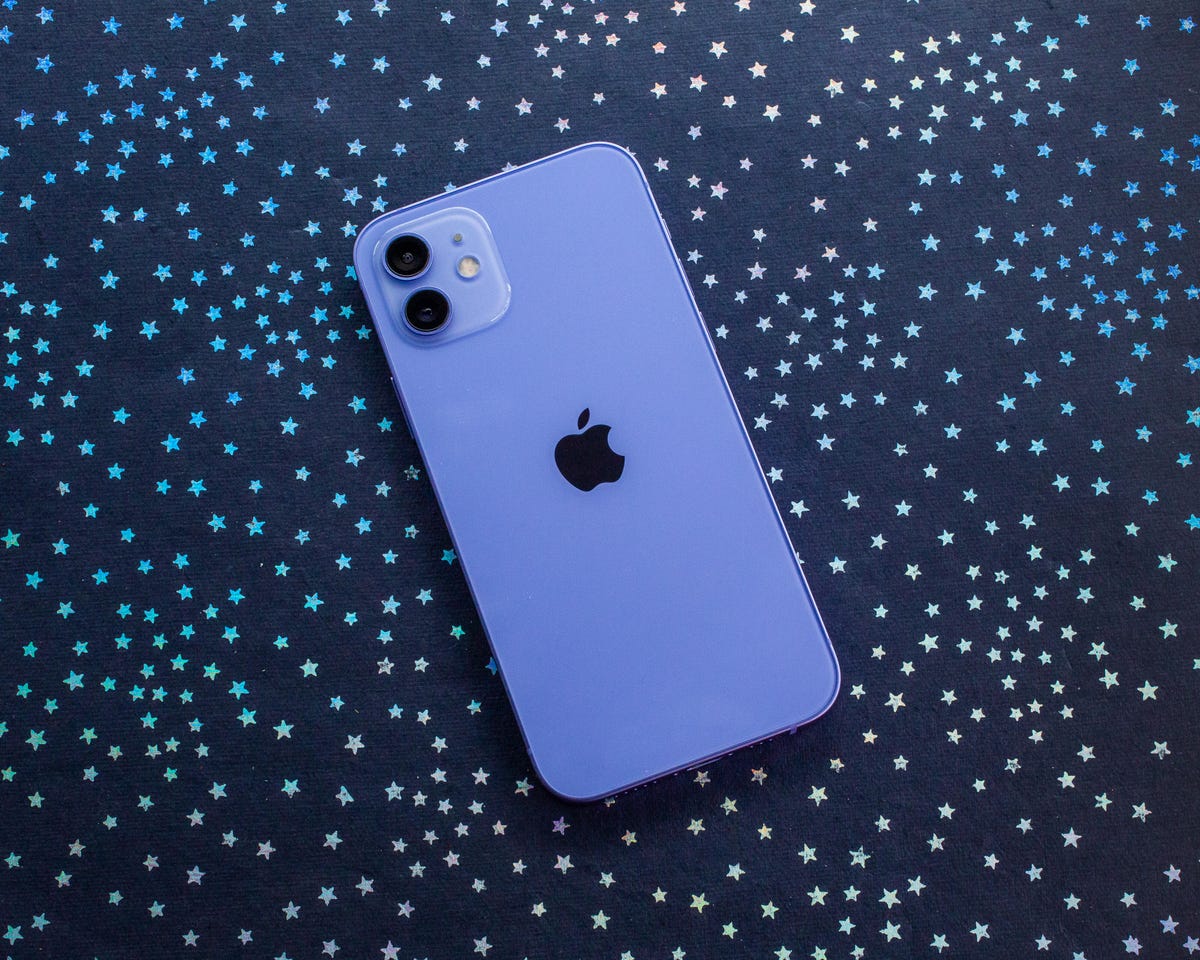

The iPhone 12.
Sarah Tew/CNETiPhone 14 vs. iPhone 12, 12 Pro
Even though the iPhone 12 lineup was released two years ago, it still shares many similarities with Apple’s latest phones. Both the iPhone 12 and iPhone 14 support 5G, run on fast processors, offer great cameras and include MagSafe accessory compatibility.
Since the iPhone 14 is more of a refresh than a major upgrade, we recommend hanging onto your iPhone 12 if it’s still in good condition. You can take advantage of the iPhone’s latest software features such as lock screen customizations, widgets and the ability to unsend text messages by upgrading to iOS 16.
The iPhone 14 received a few notable camera upgrades, like a larger sensor, a new lens with a faster aperture, improved photo processing and Action Mode which makes the movements in videos look smoother when you record them.
But the iPhone 12’s cameras remain excellent even though they are 2 years old. The iPhone 12 has a 12-megapixel dual camera system, while the iPhone 12 Pro includes a third camera with a telephoto lens. Check out our iPhone 12 review to see how the cameras held up when CNET put them through the paces.
It’s worth remembering that you get more noticeable upgrades with the iPhone 14 Pro and Pro Max. These include everything that’s new in the 14, as well as an upgraded main camera with a larger 48-megapixel sensor, an ultrawide camera that allows you to take Macro photos and a third camera with a telephoto lens. If you can get a good trade-in deal that significantly knocks down the iPhone 14 Pro’s price, upgrading from the regular iPhone 12 is a decent step-up.
The bottom line: Hold onto your iPhone 12 for another year since the iPhone 14 isn’t dramatically different. However, the iPhone 14 Pro and 14 Pro Max bring more significant changes that could be worthwhile if you can snag a good trade-in deal.
Read More: All The «New» iPhone Features That Have Been on Android For Years
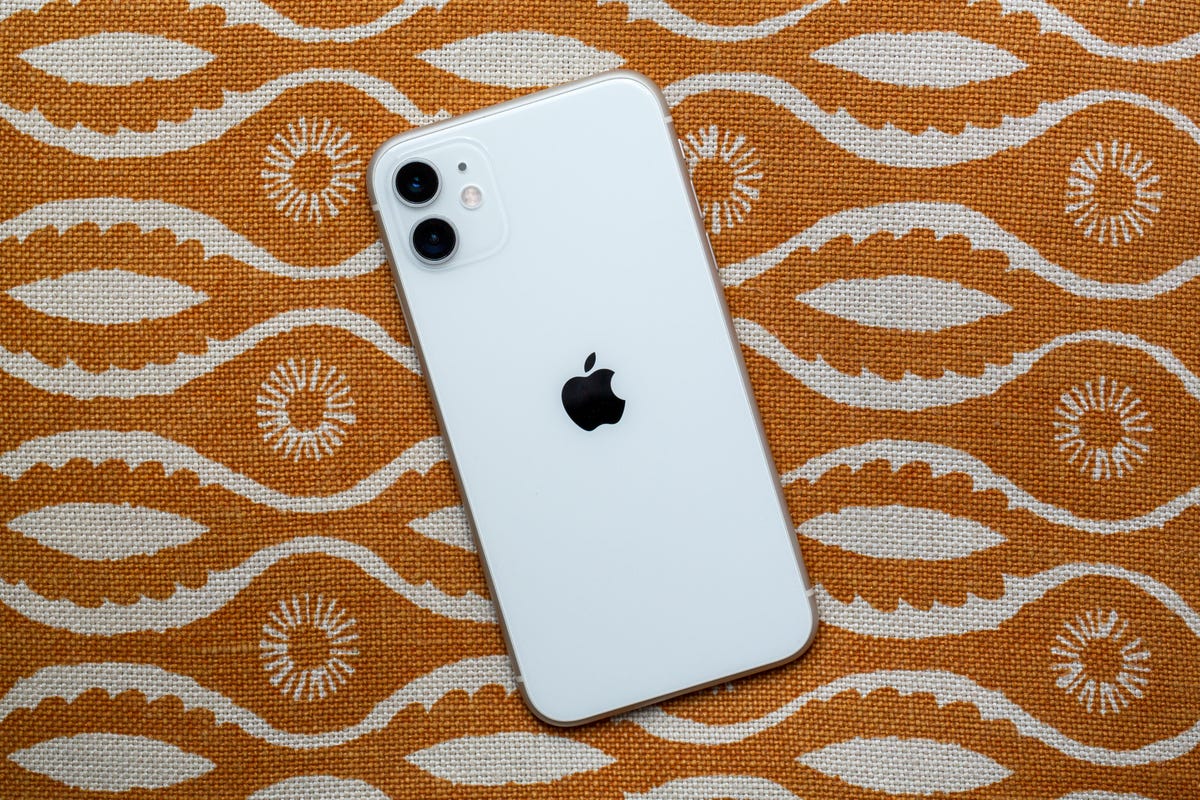

The iPhone 11.
Angela Lang/CNETiPhone 14 vs. iPhone 11, 11 Pro
If you’re using an iPhone 11, we recommend upgrading to an iPhone 14 (or even an iPhone 13). In the last three years, Apple has made enough changes to features including battery life, performance, screen quality, cameras and durability to merit buying a new iPhone.
Upgrading to the iPhone 14 will get you 5G support, more storage (128GB at the base level versus 64GB) a better main camera with a wider aperture lens, new video shooting options like Action mode and Cinematic mode, a better selfie camera with Night mode and Apple’s Photonic Engine processing, compatibility with Apple’s MagSafe accessories, longer battery life and faster performance. That’s in addition to car-crash detection and Apple’s new emergency satellite messaging feature.
Most of the photography and videography improvements are dramatic changes compared to the iPhone 11. And the longer battery life and additional storage space are welcomed upgrades that you’ll notice on a daily basis.
As previously mentioned, if you go for the 14 Pro instead, you get a new 48-megapixel main camera, a closer 3x optical zoom versus the 11 Pro Max’s 2x zoom, the Dynamic Island instead of the notch and numerous other upgrades like an always-on display.
The bottom line: The iPhone 14 lineup includes enough changes to justify upgrading from the iPhone 11. But if your phone is still in good condition and you’re satisfied with it, install iOS 16 and hold onto it for another year.
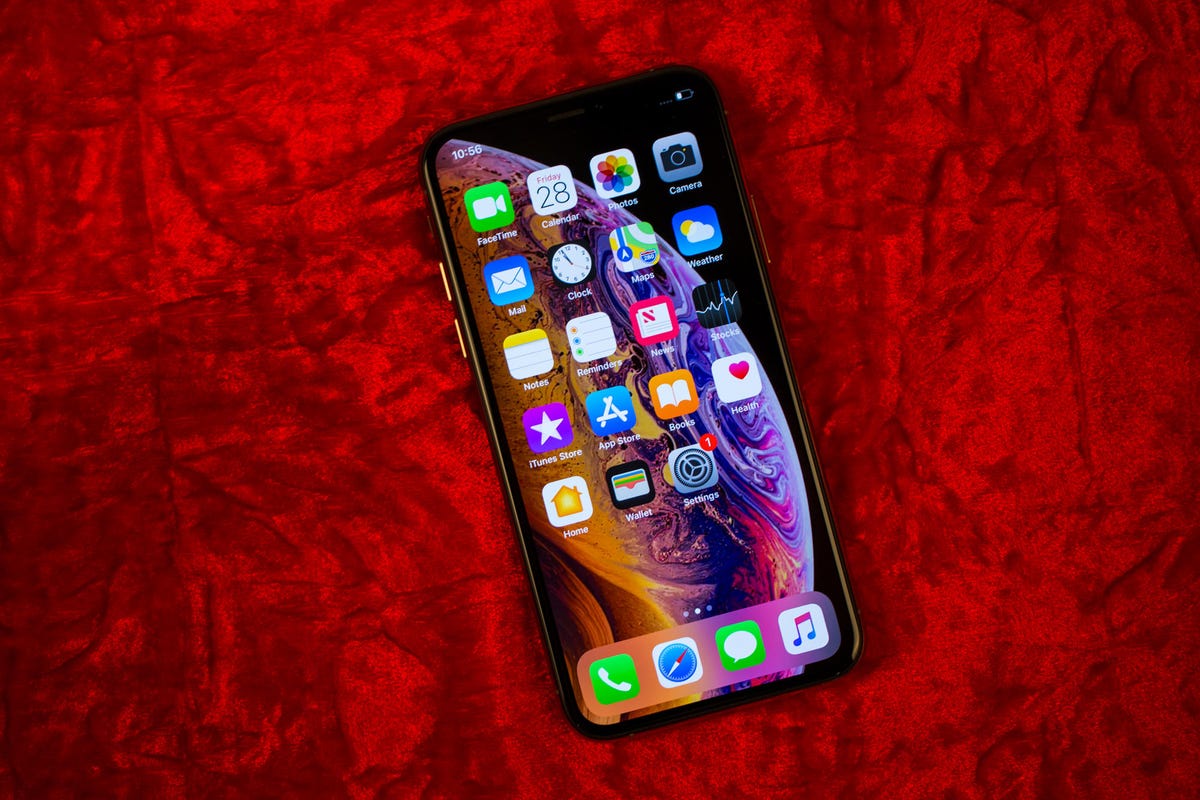

The iPhone XS.
Josh Miller/CNETiPhone 14 vs. iPhone XS, XS Max, XR
If you bought the iPhone XS, XS Max or XR at launch, that means your phone is roughly 4 years old and may be starting to feel sluggish. That alone makes a strong case for upgrading, but there’s plenty more to gain.
Compared to the iPhone XS, the iPhone 14 provides six hours of additional battery life (according to Apple’s estimates). In addition to everything that’s new in the iPhone 14 specifically, you’ll also get other upgrades Apple has added to the iPhone over the past few years.
Those include 5G support, more storage (again, you get 128GB versus 64GB), faster performance and a better camera. The iPhone XS generation lacks Night mode for taking clearer pictures in the dark, and it also doesn’t have Deep Fusion, which is Apple’s name for its image processing technique that improves detail and clarity in darker environments. The XS’s front camera has a lower 7-megapixel resolution compared to the larger and newer 12-megapixel sensor on the iPhone 14. If you’re upgrading from an iPhone XR, you’ll also get an additional camera with an ultrawide lens for taking broader group shots for the first time.
The iPhone 14 also has a larger 6.1-inch screen compared to the iPhone XS’ 5.8-inch display (the iPhone XS Max has a 6.5-inch screen, while the XR’s screen is also 6.1 inches). The design has also changed quite a bit over the past four years; newer models have flat edges, a slightly smaller notch, different finishes and a new «squircle»-shaped camera module that replaces the pill-shaped rear camera cutout. So your phone will not only feel more modern, but it’ll look newer, too.
The bottom line: If you have an iPhone XS, XS Max or XR, it’s definitely worth upgrading. You get a noticeable boost in camera quality, battery life and performance among other areas.


The iPhone X.
James Martin/CNETiPhone 14 vs. iPhone X
The iPhone X is about 5 years old, which means it probably feels slow and its battery life isn’t what it used to be. With an iPhone 14, you’ll notice a major upgrade in both categories, as well as design, improved durability, connectivity and camera quality.
Let’s start with performance. The iPhone X runs on a much older A11 Bionic chip that’s now 5 years old, while the iPhone 14 runs on Apple’s A15 Bionic processor. The iPhone 14 Pro and Pro Max run on Apple’s newer A16 Bionic chip. Both new processors are way ahead of the A11 chip, which only has a two-core neural engine compared to the A15 Bionic’s 16-core neural engine.
The iPhone’s neural engine powers tasks that rely on machine learning and artificial intelligence, which are becoming a bigger part of the iPhone experience. Things like app suggestions in the App Library and Apple’s Translate app rely on machine learning to function, which indicates that the iPhone X may struggle to keep up with newer capabilities.
The iPhone X also has a dual-lens camera similar to that of the iPhone XS, meaning it’s missing the iPhone 14’s camera hardware improvements in addition to Night mode, Deep Fusion and the ability to control depth-of-field and blur levels in Portrait mode. Like the iPhone XS, you’re only getting a 7-megapixel front camera compared to a 12-megapixel selfie camera on Apple’s newer phones.
Apple’s five-year-old iPhone also has shorter battery life, with Apple estimating it should last for 13 hours when playing back video compared to 20 hours on the iPhone 14. The iPhone 14’s 6.1-inch screen is bigger than the 5.8-inch display on the iPhone X, and it should also be brighter since it can reach 800 nits of max brightness compared to the iPhone X’s 625-nit screen.
The iPhone 14 supports Dolby Atmos and spatial audio playback, while the iPhone X just has stereo playback. That’s probably not a deal-breaker, but might be crucial if you watch a lot of video on your phone without headphones.
And of course, there’s the benefit of getting car-crash detection, Apple’s new emergency SOS messaging via satellite option, better water resistance (up to 6 meters for 30 minutes versus 1 meter), 5G support, more storage space, Ceramic Shield for the display, a refreshed design and the option to use MagSafe accessories on the iPhone 14.
The bottom line: If you have the iPhone X, it’s time to upgrade. The iPhone 14 will feel new in just about every way, from the camera to performance, battery life and the way it looks and feels.
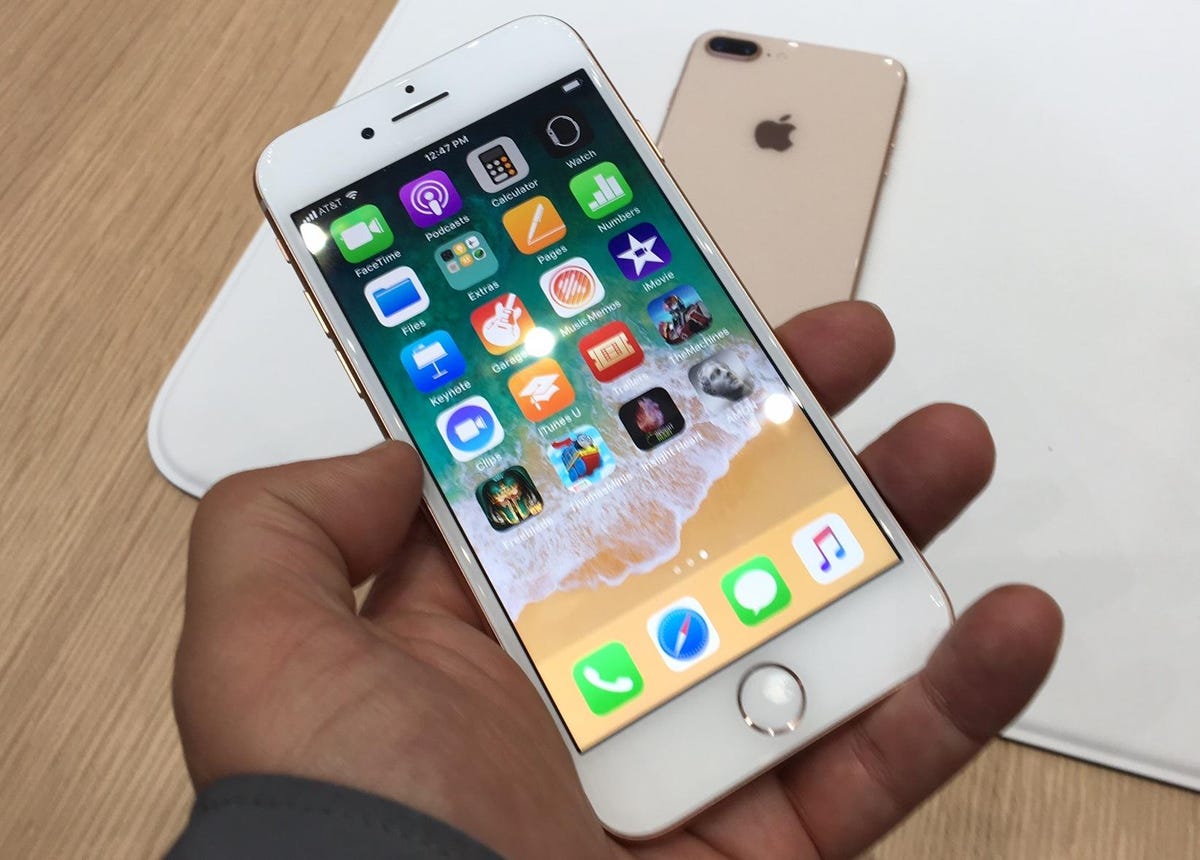

The iPhone 8 and 8 Plus.
Gabriel Sama/CNETiPhone 14 vs. iPhone 8, 8 Plus
The iPhone 8 generation has Apple’s legacy iPhone design, which is fitting for a phone that’s now 5 years old. If you have an iPhone 8 and are considering an upgrade, many of the reasons to do that are the same as the reasons to upgrade from the iPhone X. The processor is getting old, which could make it harder to use newer iPhone features that rely on machine learning. The cameras are outdated and lack features like Night mode (the smaller iPhone 8 doesn’t have Portrait mode either, since it only has one lens). By upgrading, you’ll get more storage, significantly longer battery life, support for 5G connectivity and MagSafe accessories, too.
But the biggest difference is in the iPhone 8’s design, which is much more than just an aesthetic upgrade. Phones with Apple’s more modern edge-to-edge screen trade Touch ID for Face ID, which lets you unlock your phone and authenticate payments just by looking at your device. If you prefer Touch ID over Face ID, especially since it’s difficult to use Face ID while wearing a mask, you might want to at least consider upgrading to the $429 iPhone SE, since it has the same processor as the iPhone 13, 5G compatibility and plenty of photography improvements inside a similar body to the iPhone 8.
Upgrading to the iPhone 14 has a noticeably large jump in display size and quality. Since newer phones like the iPhone 14 don’t have a home button, there’s more room for Apple to expand the screen without making the device feel cumbersome. The iPhone 14’s screen is even larger than the iPhone 8 Plus’ 5.5-inch screen despite the device itself feeling more compact. (And for more perspective, consider that the iPhone 13 Mini has a 5.4-inch display). If you go for the 14 Pro you get another big change: the Dynamic Island, which transforms the notch area into an area for viewing alerts, system notifications and apps running in the background like Spotify or Apple Music.
From personal experience, switching from an iPhone 8 (which has a 4.7-inch screen) to the iPhone 12’s 6.1-inch display makes reading, checking email and watching videos much more comfortable. The screen isn’t only larger, but it’s also more vibrant with better contrast since it uses an OLED display rather than LCD.
The bottom line: The iPhone 14 is a huge jump from the iPhone 8. Everything about this phone will feel fast and new: the much larger and bolder screen, Face ID, the speedier processor, its longer battery life and of course the substantially upgraded cameras. Of note however, if you really want to get a newer iPhone but keep the iPhone 8’s design, trade up to the current 2022 iPhone SE.
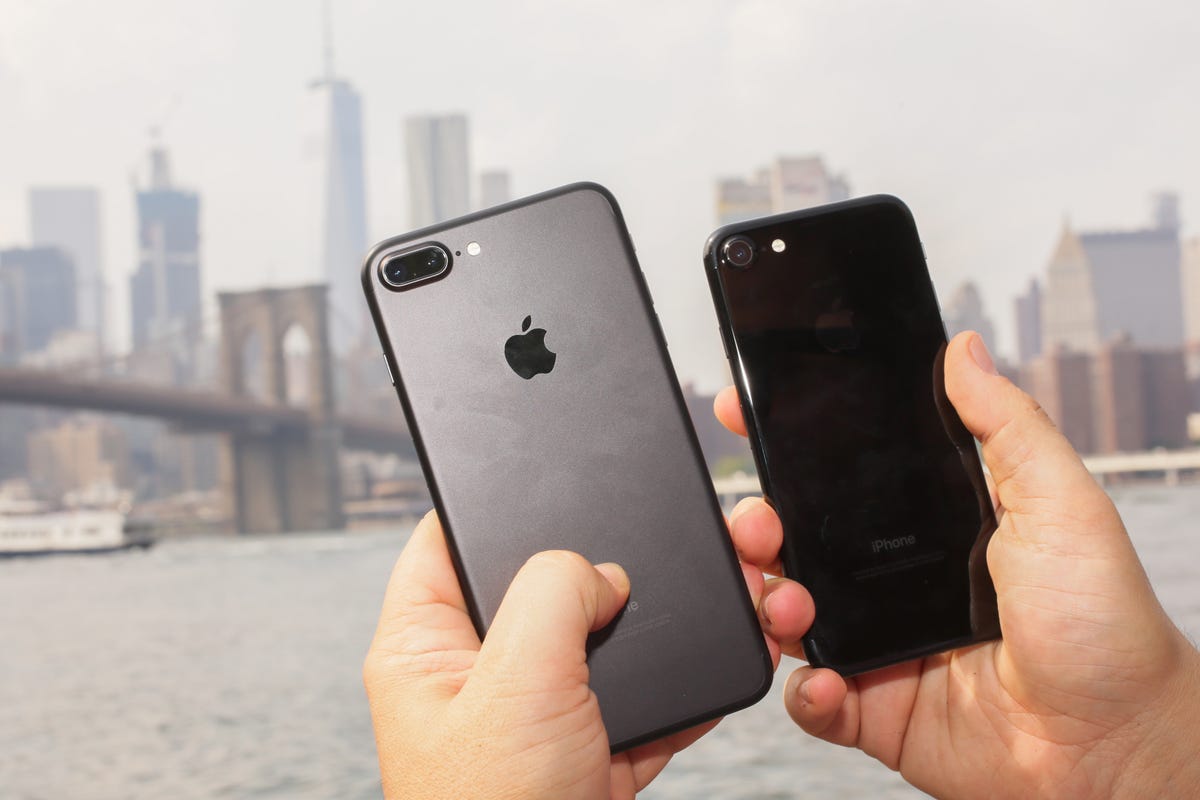

The iPhone 7 Plus and iPhone 7.
Sarah Tew/CNETiPhone 14 vs. iPhone 7, 7 Plus
If you have an iPhone 7, it’s time to upgrade. It is 6 years old, and it shows in everything from the processor to the camera and storage space. The iPhone 7 doesn’t support iOS 16, providing even more incentive for acquiring a newer device.
While we generally recommend choosing the iPhone 14 Pro over the iPhone 14 in most cases, coming from a phone this old, means you’ll find plenty that’s new in the iPhone 14.
The iPhone 7 runs on an aging A10 Fusion processor, which doesn’t even have a neural engine and is years behind Apple’s latest technology. It has a single-lens camera without Portrait mode, while the 7 Plus has two cameras. But those cameras lack many modern features like Night mode and Portrait Lighting, which adds specific lighting effects to your portraits.
Similar to the iPhone 8, the iPhone 7 series includes Touch ID and comes in either 4.7- or 5.5-inch screen sizes. But since the iPhone 7 is a year older than the iPhone 8, it’s also missing wireless charging, which means you must plug it in to charge.
If you’ve owned an iPhone 7 for several years, it’s probably bursting at the seams since it has substantially less storage space. The entry-level iPhone 7 only came with 32GB of space, which is a quarter of capacity available on the cheapest iPhone 14.
The iPhone 14 brings major gains in nearly every aspect. The standard model has a larger, bolder and brighter bezel-free 6.1-inch screen that still feels compact since it doesn’t have a home button. It runs on Apple’s A15 Bionic processor, which is better equipped to handle newer iOS features. And it has a drastically improved dual-lens camera with a larger main camera sensor and advanced features like the new Cinematic mode for video and Night mode. Plus, Apple’s estimates indicate it’ll offer seven hours of additional battery life during video playback, which is a huge bump.
The bottom line: If you’re still holding onto your iPhone 7, there’s no question that you’re due for an upgrade. A better screen, compatibility with iOS 16, longer battery life and more advanced cameras are just a few of the gains the iPhone 14 has to offer over the iPhone 7. And similar to my recommendation with the iPhone 8, if you really want to keep the home button and save some money, consider the iPhone SE. It gives you more recent performance upgrades while keeping a similar phone style.
Technologies
Apple Reportedly Planning Cheaper Macs to Compete With Budget Chromebooks, PCs
Apple doesn’t market its machines as affordable, but that could be changing.
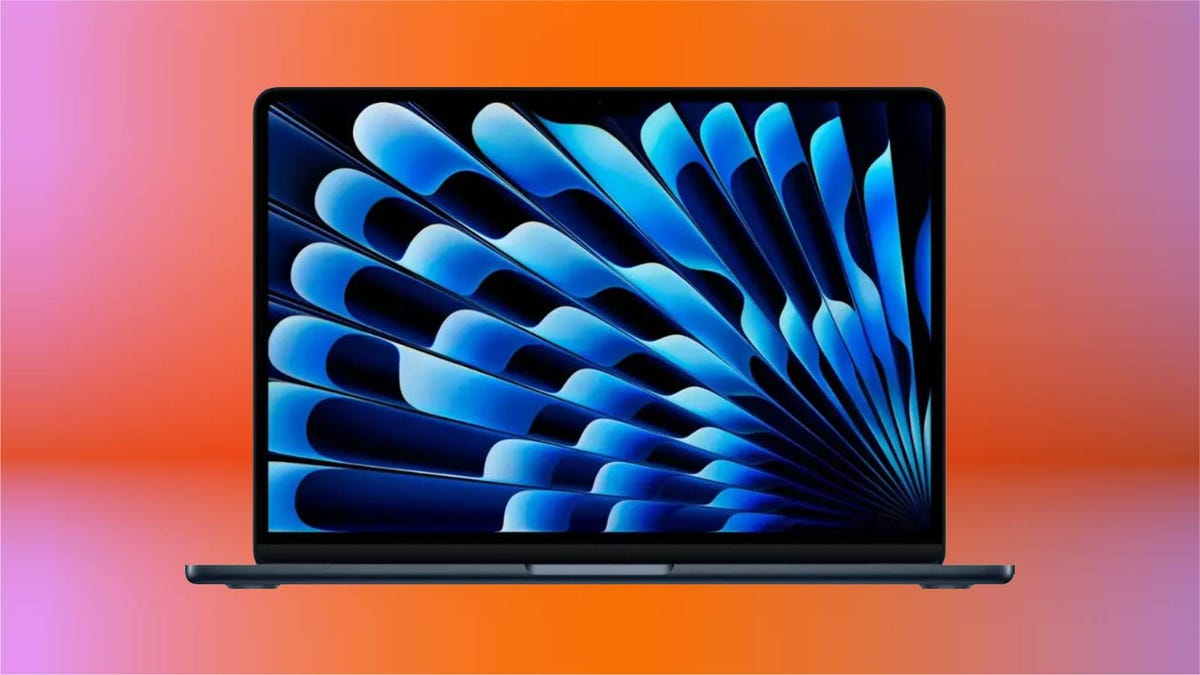
Apple may release more affordable Mac laptops to compete with Chromebooks and budget-friendly Windows laptops as early as 2026.
Bloomberg’s Mark Gurman reports the company has plans to roll out a machine for «well under $1,000.» According to Gurman, the new laptop is already in early production under the codename J700. This matches earlier rumors that a low-cost MacBook Air was in the pipeline at around $599, which would allow Apple to directly compete with other cheap laptops, including Chromebooks and Windows PCs.
A representative for Apple did not immediately respond to a request for comment.
Don’t miss any of our unbiased tech content and lab-based reviews. Add CNET as a preferred Google source.
According to the report, costs will be kept down by using a lower-end LCD that’s smaller than the 13.6-inch MacBook Air, potentially making the new affordable MacBook as small as 12 inches.
Another way Apple could reduce the cost is by using an A-series iPhone chip, which falls short of the top-tier performance offered by the MacBook Pro or the current M4 Air. The upcoming chip may be a variant of the A19 Pro chip that debuted with the iPhone 17 Pro and iPhone Air, which Apple says is capable of MacBook-level performance.
As CNET senior editor Matt Elliott noted, the promise is a bold one. He speculates that the rumored $599 MacBook Air may get the same smartphone processor, or an M-series chip based on that architecture.
Bloomberg also reports that a MacBook Pro with an M5 Pro and M5 Max chip is in development, and Apple has completed work on a MacBook Air powered by the M5 chip, which is planned for release early next year.
The affordable laptop would be designed for casual users, students and businesses, specifically individuals who need a device for tasks such as web browsing, light media editing and document creation. The tech giant is also targeting the education market, as well as iPad buyers who may also want a traditional laptop.
«If this is strictly a move to entice consumers with a high-quality, lower-cost MacBook running MacOS in place of an iPad with a keyboard, then yes, Apple can likely take a chunk of that market,» said Josh Goldman, managing editor at CNET.
«Making inroads into the education market at this point, where Chromebooks have taken over since the pandemic, will prove challenging, though I’m sure it’s nothing that throwing billions of dollars at can’t fix,» CNET’s Goldman said.
This price range is ‘a big departure’
Price is likely to be key here. A $599 price tag would place the new Mac in the same range as more affordable Chromebooks and entry-level laptops, representing a significant change from Apple’s previous strategy.
«Apple potentially dipping into the Chromebook range of $300 to $500 with a new MacBook is a big departure,» said Goldman.
He notes that one of Apple’s most affordable MacBooks is the M4 MacBook Air, available new starting at $999 for the 13-inch model. Walmart still sells a new M1 MacBook Air, a 5-year-old laptop, for around $600.
By contrast, an iPad 11th Gen with a Magic Keyboard will run you around $600, making it clear that Apple’s target market for the rumored device is students and lighter users.
Apple typically hasn’t targeted the lower-priced segment of the market with its MacBooks. However, with consumer wallets under pressure from inflation, high tariffs and layoffs, an affordable MacBook could be imperative and timely.
Technologies
Today’s NYT Connections: Sports Edition Hints and Answers for Nov. 5, #408
Here are hints and the answers for the NYT Connections: Sports Edition puzzle for Nov. 5, No. 408.
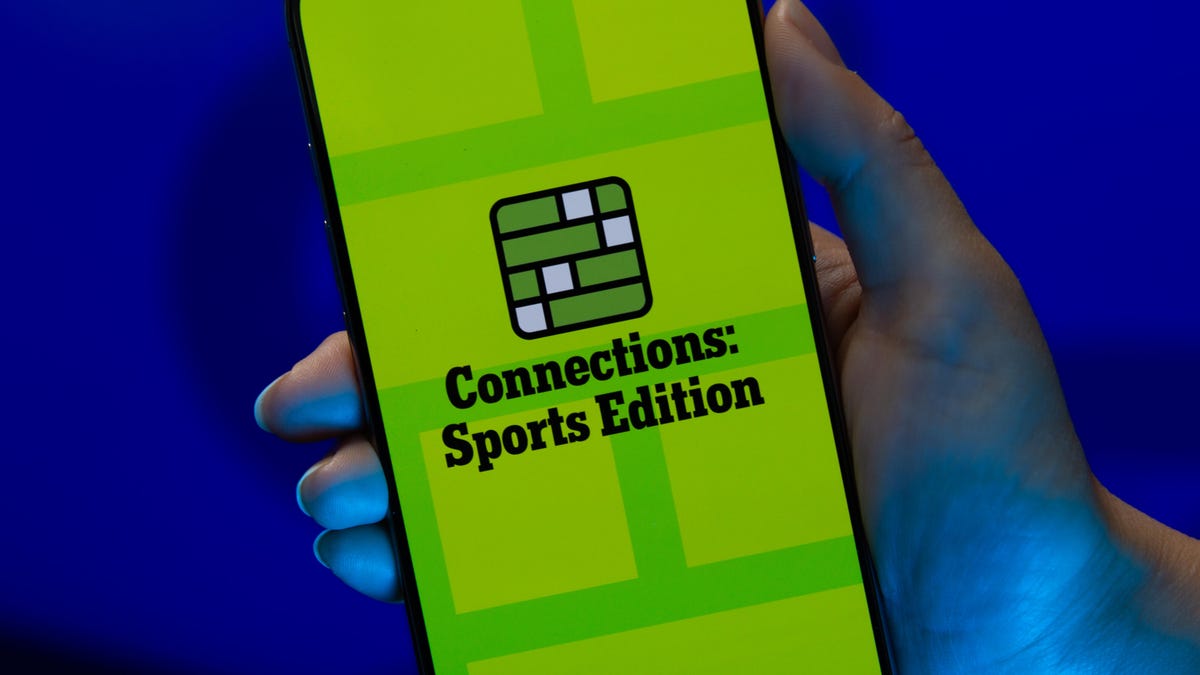
Looking for the most recent regular Connections answers? Click here for today’s Connections hints, as well as our daily answers and hints for The New York Times Mini Crossword, Wordle and Strands puzzles.
Today’s Connections: Sports Edition is pretty diverse. The blue answers stuck out to me right away, because some of them are super famous and the others felt like they belonged with those names. If you’re struggling but still want to solve it, read on for hints and the answers.
Connections: Sports Edition is published by The Athletic, the subscription-based sports journalism site owned by the Times. It doesn’t show up in the NYT Games app but appears in The Athletic’s own app. Or you can play it free online.
Read more: NYT Connections: Sports Edition Puzzle Comes Out of Beta
Hints for today’s Connections: Sports Edition groups
Here are four hints for the groupings in today’s Connections: Sports Edition puzzle, ranked from the easiest yellow group to the tough (and sometimes bizarre) purple group.
Yellow group hint: How to see a game.
Green group hint: Soccer.
Blue group hint: Giddy up!
Purple group hint: Not a run play.
Answers for today’s Connections: Sports Edition groups
Yellow group: Ways to consume a sporting event.
Green group: NWSL teams.
Blue group: Triple Crown horse racing winners.
Purple group: Pass ____.
Read more: Wordle Cheat Sheet: Here Are the Most Popular Letters Used in English Words
What are today’s Connections: Sports Edition answers?
The yellow words in today’s Connections
The theme is ways to consume a sporting event. The four answers are in person, radio, streaming and television.
The green words in today’s Connections
The theme is NWSL teams. The four answers are Current, Dash, Pride and Spirit.
The blue words in today’s Connections
The theme is Triple Crown horse racing winners. The four answers are Citation, Gallant Fox, Omaha and Secretariat.
The purple words in today’s Connections
The theme is pass ____. The four answers are breakup, interference, protection and rush.
Technologies
Today’s NYT Connections Hints, Answers and Help for Nov. 5, #878
Here are some hints and the answers for the NYT Connections puzzle for Nov. 5, #878.

Looking for the most recent Connections answers? Click here for today’s Connections hints, as well as our daily answers and hints for The New York Times Mini Crossword, Wordle, Connections: Sports Edition and Strands puzzles.
Today’s NYT Connections puzzle has a diverse mix of topics, including a neat blue category that music fans will ace. And it isn’t too tough, but if you need help, you’re in the right place. Read on for clues and today’s Connections answers.
The Times now has a Connections Bot, like the one for Wordle. Go there after you play to receive a numeric score and to have the program analyze your answers. Players who are registered with the Times Games section can now nerd out by following their progress, including the number of puzzles completed, win rate, number of times they nabbed a perfect score and their win streak.
Read more: Hints, Tips and Strategies to Help You Win at NYT Connections Every Time
Hints for today’s Connections groups
Here are four hints for the groupings in today’s Connections puzzle, ranked from the easiest yellow group to the tough (and sometimes bizarre) purple group.
Yellow group hint: Mess up.
Green group hint: Lead pipe is another one.
Blue group hint: They command the stage.
Purple group hint: Not snow, but …
Answers for today’s Connections groups
Yellow group: Make a hash of.
Green group: Weapons in the game Clue.
Blue group: Iconic soul singers.
Purple group: Rain ____.
Read more: Wordle Cheat Sheet: Here Are the Most Popular Letters Used in English Words
What are today’s Connections answers?
The yellow words in today’s Connections
The theme is make a hash of. The four answers are blow, botch, butcher and spoil.
The green words in today’s Connections
The theme is weapons in the game Clue.The four answers are candlestick, knife, rope and wrench.
The blue words in today’s Connections
The theme is iconic soul singers. The four answers are (Anita) Baker, (Roberta) Flack, (Aretha) Franklin and (Gladys) Knight.
The purple words in today’s Connections
The theme is rain ____. The four answers are bow, coat, forest and maker.
-

 Technologies3 года ago
Technologies3 года agoTech Companies Need to Be Held Accountable for Security, Experts Say
-

 Technologies3 года ago
Technologies3 года agoBest Handheld Game Console in 2023
-

 Technologies3 года ago
Technologies3 года agoTighten Up Your VR Game With the Best Head Straps for Quest 2
-

 Technologies4 года ago
Technologies4 года agoVerum, Wickr and Threema: next generation secured messengers
-

 Technologies4 года ago
Technologies4 года agoBlack Friday 2021: The best deals on TVs, headphones, kitchenware, and more
-

 Technologies4 года ago
Technologies4 года agoGoogle to require vaccinations as Silicon Valley rethinks return-to-office policies
-

 Technologies4 года ago
Technologies4 года agoOlivia Harlan Dekker for Verum Messenger
-

 Technologies4 года ago
Technologies4 года agoiPhone 13 event: How to watch Apple’s big announcement tomorrow





